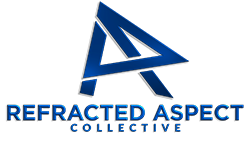
When your customer personas don’t align with your ideal buyer, the consequences ripple quietly but persistently through your marketing and sales efforts. Campaigns generate leads that look promising on paper but stall in the pipeline or fail to convert. This misalignment isn’t just a marketing hiccup; it’s an operational drag that saps resources and clouds decision-making. Understanding how well your personas reflect your true buyer is essential to breaking this cycle and regaining control over your growth trajectory.
- When Misaligned Personas Stall Growth
- The Root Cause: Outdated Personas Embedded in Decision Habits
- Starting Small: Aligning Personas with Real Buyers in Lean Operations
- Scaling Fast: How Misaligned Personas Disrupt Workflows and Departments
- Fixing the Drag: Creating Clarity and Structure Amid Rapid Growth
- Preparing for Transition: Preserving Continuity When Personas Are Legacy
- Living the Misalignment: Quiet Signals in Daily Operations
- Frequently Asked Questions
- Reframing the Persona Alignment Challenge
- Partnering with Refracted Aspect for Clearer Perspective
When Misaligned Personas Stall Growth
Imagine a growing business where marketing consistently delivers leads that sales teams hesitate to pursue. The leads fit the broad demographic outlined in the personas but lack the urgency, budget, or authority to move forward. Sales cycles stretch longer, and conversion rates dip without clear explanation.
This scenario isn’t rare. It’s a recurring bottleneck where marketing and sales operate with different definitions of the “ideal customer.” Campaigns are optimized for personas that no longer reflect the evolving market or the company’s strategic priorities.
Leaders feel the pressure as revenue targets loom, but the disconnect remains invisible in daily reports. The team chalks it up to market conditions or competition, while the root cause quietly undermines momentum. The tension grows as resources are poured into campaigns that attract the wrong leads, creating a feedback loop of frustration and inefficiency.
The Root Cause: Outdated Personas Embedded in Decision Habits
At the heart of this dysfunction is a decision habit that’s easy to overlook: relying on personas created early in the business lifecycle and never revisiting them critically. These personas become institutionalized, shaping campaign strategies and sales approaches without question.
Teams operate under the assumption that these profiles still represent the best opportunities, even as market dynamics shift and buyer behaviors evolve. This embedded habit is reinforced by a lack of structured review processes and the comfort of familiar frameworks.
Leadership often misses this because the personas are treated as static artifacts rather than living tools. The disconnect between personas and actual buyer profiles becomes normalized, and the operational impact is absorbed as “noise” rather than a signal demanding change.
Starting Small: Aligning Personas with Real Buyers in Lean Operations
For solo founders and small teams, the challenge is acute: limited bandwidth and no luxury for extensive market research. The first meaningful shift is to treat customer personas as hypotheses, not gospel. This means actively testing assumptions through direct conversations with current customers and frontline sales feedback.
Rather than overhauling personas wholesale, focus on identifying one or two key misalignments that show up in lead quality or sales conversations. Adjust messaging and targeting in campaigns accordingly, then observe the impact. This iterative approach fits within the constraints of lean operations and avoids paralysis by analysis.
It’s about creating a feedback loop that connects marketing efforts directly to sales outcomes, even if informally. This small structural move builds clarity and begins to close the gap between who you think your buyer is and who they actually are.
Scaling Fast: How Misaligned Personas Disrupt Workflows and Departments
In businesses growing faster than they can stabilize, misaligned customer personas create friction across multiple functions. Marketing funnels leads that don’t fit sales’ criteria, causing repeated handoffs and rework. Sales teams spend time qualifying leads that drain capacity and morale.
Customer success teams then inherit clients who aren’t the right fit, leading to higher churn and increased support costs. This misalignment cascades into finance, where forecasting becomes unreliable due to inconsistent conversion rates and unpredictable revenue streams.
Leadership often sees these as isolated issues but misses the systemic connection: the personas driving campaigns are out of sync with the buyers who generate sustainable revenue. This disconnect quietly drags on growth and operational efficiency, compounding as the business scales.
Fixing the Drag: Creating Clarity and Structure Amid Rapid Growth
When teams are overloaded and processes are duct-taped, the solution isn’t a perfect system but stopping the drag that slows everything down. Start by clarifying roles around persona ownership and lead qualification criteria. Marketing and sales must agree on who the ideal buyer is and what signals indicate a qualified lead.
Implement simple, repeatable checkpoints in the lead handoff process to catch misalignments early. This reduces wasted effort and prevents leads from falling through cracks. Leadership should facilitate regular cross-functional reviews focused on persona relevance and campaign effectiveness.
These actions create structure without stifling momentum, making execution easier across people and processes. The goal is to reduce friction and improve alignment so the business can scale with less internal resistance.
Preparing for Transition: Preserving Continuity When Personas Are Legacy
For owners navigating succession, sale, or systemisation, long-standing personas and unspoken roles become liabilities. Institutional knowledge about who the customer is often lives in people, not documented processes. When those people leave, the business risks losing critical insight.
The initial shift is to externalize this knowledge by documenting the rationale behind personas and how they connect to campaign strategies. This creates a shared reference point that supports continuity and reduces dependency on individuals.
At the same time, leaders must acknowledge that legacy personas may no longer serve the business’s future direction. Opening space for revisiting and revising these profiles is essential to preserving trust with new stakeholders and ensuring the business can stand on its own.
Living the Misalignment: Quiet Signals in Daily Operations
In the day-to-day, misaligned personas show up as recurring friction points. Sales teams might complain about leads that “look good on paper but never close.” Marketing may hear offhand comments like “we’ll just push this campaign and see what happens,” signaling uncertainty about targeting.
Manual fixes become routine—adjusting messaging mid-campaign, requalifying leads after handoff, or patching reporting to mask inconsistent conversion data. These corner-cutting behaviors accumulate, creating a culture of “deal with it later” that masks deeper issues.
Clients from certain segments may repeatedly express dissatisfaction or confusion, but these complaints are treated as isolated incidents rather than signs of a persona mismatch. The business runs fast, but these quiet indicators accumulate, eroding efficiency and clarity over time.
Frequently Asked Questions
Why do my campaigns keep attracting leads that don’t convert, even though they match my personas?
It’s common for personas to become outdated as markets and buyer behaviors evolve. Matching leads to personas doesn’t guarantee they’re the right fit if those personas no longer reflect your ideal buyer’s current needs or decision-making criteria. The disconnect often lies in untested assumptions baked into your profiles. Revisiting and validating personas with real sales feedback is key to closing this gap.
How can I tell if my sales and marketing teams are misaligned on customer personas?
Look for signs like frequent disagreements over lead quality, inconsistent definitions of a qualified lead, or repeated handoffs where leads get stuck or dropped. If marketing reports strong lead volume but sales reports low conversion, that’s a red flag. Regular cross-functional conversations focused on persona clarity and lead qualification criteria help surface and resolve these misalignments.
What’s the first step to fix persona misalignment when my team is already stretched thin?
Start small by treating your personas as hypotheses rather than fixed truths. Use direct conversations with current customers and frontline sales input to identify one or two key misalignments. Adjust your messaging or targeting in campaigns accordingly and observe the impact. This iterative approach fits within limited resources and builds momentum without overwhelming your team.
How does misaligned persona strategy affect other departments beyond marketing and sales?
Misalignment creates a ripple effect. Customer success teams may struggle with clients who aren’t the right fit, increasing churn and support costs. Finance teams face forecasting challenges due to unpredictable conversion rates. These downstream inefficiencies compound operational drag and obscure the true health of your growth efforts.
When preparing to sell or transition my business, how do I handle legacy customer personas?
Legacy personas often live in people’s heads, creating risk when those individuals leave. Document the rationale behind your personas and how they connect to campaigns to externalize this knowledge. At the same time, be open to revisiting and revising these profiles to align with future business directions. This balance preserves trust and makes the handover smoother.
Reframing the Persona Alignment Challenge
The tension behind misaligned customer personas is more than a marketing issue—it quietly drags on growth, operational efficiency, and cross-functional alignment. Left unaddressed, it inflates sales cycles, wastes resources, and clouds forecasting. Progress looks like a shift from static, assumed personas to living, tested profiles that connect marketing efforts directly to sales outcomes.
This article offers a perspective shift: the problem isn’t just inaccurate personas but the decision habits and organizational blind spots that embed them into daily operations. Recognizing this opens the door to targeted, practical adjustments that restore clarity and momentum. Persona alignment is one diagnostic among many, but it’s a foundational question that shapes how effectively a business can scale and adapt.
Partnering with Refracted Aspect for Clearer Perspective
Refracted Aspect works with founder-led and leadership-driven businesses that already have traction, and the weight of responsibility that comes with it. These are operators who know their market, feel the operational strain, and want an outside perspective sharp enough to see what they can’t.
Booking a Discovery Call with Refracted Aspect is exactly that: a practical, working discussion between peers who’ve both been in the trenches. We’ll talk about the internal dynamics you’re seeing, the challenges you’re working around, and the objectives that matter most. The goal is to give you a fresh, objective read on your current position and the options in front of you.
















